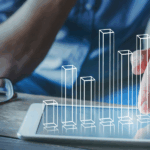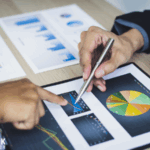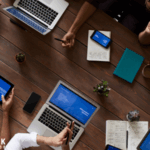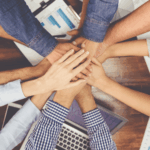Collaborative work dynamics are evolving with the advent of Artificial Intelligence (AI), prompting businesses to assess their approaches to teamwork and productivity. Recent research from Johns Hopkins Carey Business School and MIT Sloan School of Management highlights AI’s potential in boosting collaborative efficiency and reshaping workplace interactions. This innovation is leading companies to rethink conventional team structures and consider the integration of AI in daily operations. The results suggest not only improved performance but also changes in communication patterns within organizations.
Traditionally, increasing productivity often meant adding more personnel, but the integration of AI challenges this norm. Previously conducted studies had already acknowledged the role of AI in automating repetitive tasks, but current findings indicate a broader impact on collaboration. AI helps to manage tasks that require data processing at a scale beyond human capability, thereby allowing human workers to allocate efforts to areas necessitating contextual and judgmental skills. This shift reveals an expansion of labor opportunities rather than a reduction.
How Is AI Enhancing Creative Production?
AI’s involvement in the workplace has significantly influenced creativity and innovation. Procter & Gamble experimented with this model in their innovation labs, noting that individuals using AI performed on par with pairs working without AI. Teams augmented with AI yielded the most creative and effective results. This has encouraged more technically informed solutions and a more seamless integration of marketing and engineering efforts.
The idea of a “cybernetic teammate,” where humans and AI co-exist and co-operate in workflows, extends beyond the mere use of AI as a tool. Employees are noting greater enthusiasm and reduced frustration, as AI minimizes the friction traditionally experienced between creative and technical roles. There is a noteworthy enhancement in cross-functional collaboration where AI assists with repetitive and analytical tasks, permitting humans to focus on innovation and strategy.
What Does This Mean for Workplace Productivity?
Productivity measurement is taking a new form as AI algorithms begin handling drafting, scheduling, and analysis roles. This new division of labor suggests that the future of successful teamwork might focus on human-AI pairs rather than larger groups of humans alone. Consequently, a single employee equipped with AI can reach output levels that previously demanded multiple people.
However, the transition to integrating AI is not devoid of challenges. Organizations have faced a productivity paradox, where initial integration results in performance dips due to unchanged workflows despite enhanced tools. MIT Sloan Review indicates that revising roles and incentives alongside technology adaptation is crucial for realizing potential benefits. Firms that remodel job roles to optimize human-AI collaboration recover more rapidly and perform well.
A study by Columbia University emphasized the importance of treating AI as a collaborative partner rather than merely a tool. Success is anchored in calibrating trust in AI systems. When employees either overly trust or undervalue AI, performance and satisfaction decline. Understanding AI’s capabilities and limitations is crucial for fostering efficient human-AI partnerships.
Adopting AI in collaborative businesses redefines productivity and teamwork. The emphasis shifts to designing roles that capitalize on AI’s data capabilities while harnessing human creativity and oversight. The integration process should ensure a balance between speed and accuracy, maintaining accountability. This approach drives firms to adjust traditional metrics and embrace novel productivity assessments.










